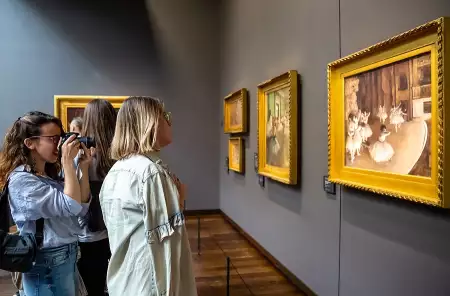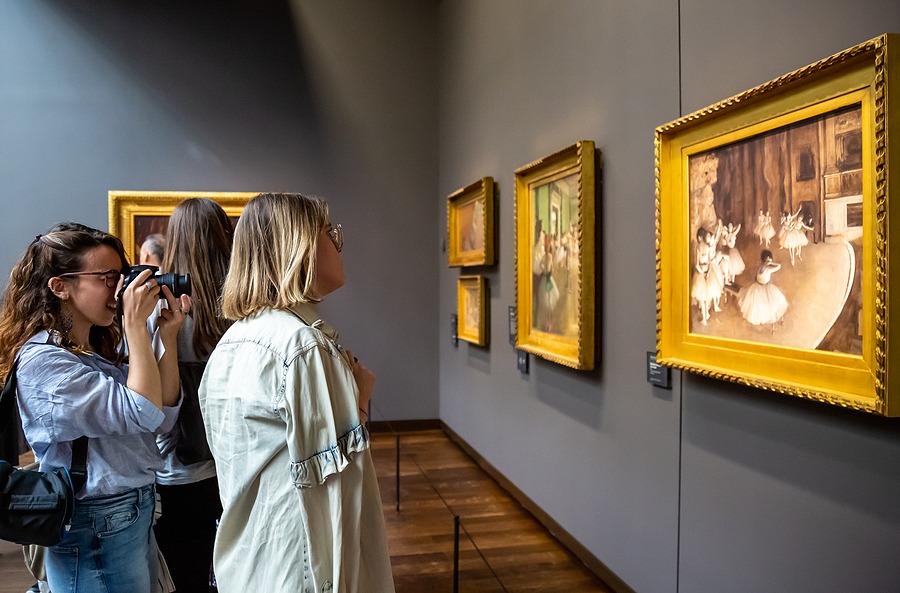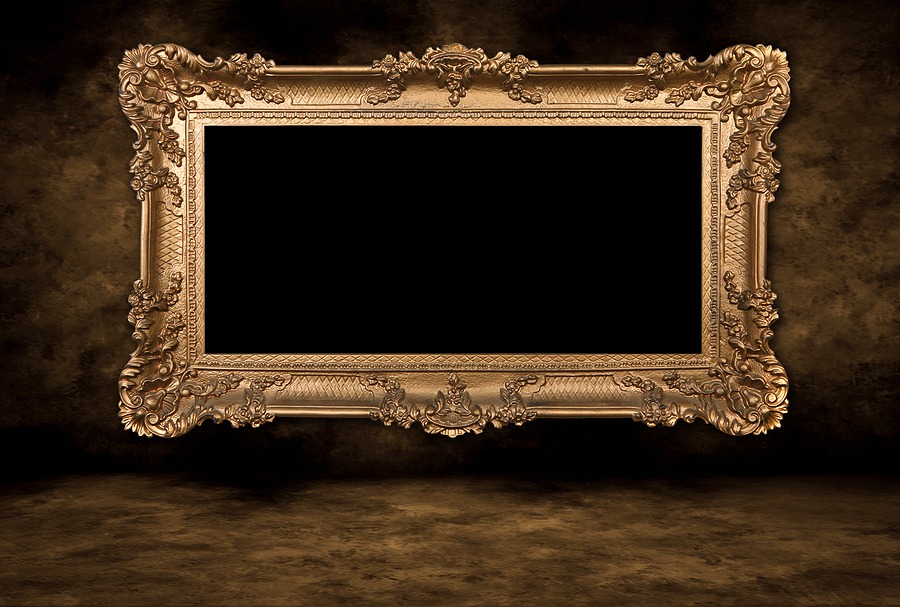
by James Church
June 24, 2017 Updated October 19, 2023
948
4 votes
Reading time: 1 minutes
The firm's main research and development office is based in Tel Aviv Israel. It originally specialized in Forex and indices spreadbetting and CFDs but has recently expanded in stock trading also.

“A picture can tell a thousand words,” so the saying goes…and in a thousand words (or so), we hope to discuss why art investing, such as buying a picture, might be worth your while!
So, where do we begin?
First, buy the book! Knowledge is power. A beginner’s guide by a reputable institution or publisher is a good place to start prior to art investing. For brief beginner’s guide on the art world and fine art investing, the International Foundation for Art Research (IFAR) provides a useful resource on the key questions any art collector should ask.
At the time of writing, eToro has 2.2 out of 5 star on Trust pilot. The comments suggest that the platform offers some impressive features but withdrawing money can be difficult. Having said that, some of the negative reviews appear to be rants rather than constructive criticism. This can be examples of traders losing money through their own recklessness rather than eToro's fault. You should therefore take this reviews with a pinch of salt. OANDA is a global financial services company providing advanced currency solutions to both retail and corporate clients all over the world. In this article, we are going to review this broker’s trading options, tools, platforms, spreads, commissions, security measures, and educational resources to help traders make the right choice. AvaTrade offers a wide variety of trading solutions (spread trading, CFDs, and social trading), and peace of mind with its comprehensive regulation, covering the EU, Australia, Canada and South Africa. Clients can use a variety of platforms for discretionary and automated trading.![]() Best Award Winning Brokers
Best Award Winning Brokers Show Search Filters
Show Search Filters
76% of retail investor accounts lose money when trading CFDs with this provider.
76.6% of retail investor accounts lose money when trading CFDs with this provider. You should consider whether you understand how CFDs work and whether you can afford to take the high risk of losing
76% of retail investor accounts lose money when trading CFDs with this provider.
This Lazy Trader guide will introduce you to the big and complex subject of art collecting. From the outset, it is essential to both define your aims and expand your knowledge.

Investing in art is a good method for diversification – which is a fundamental principle of sound financial investing. It’s an alternative asset class to the stock market and other forms of investment such as real estate.
What’s more, art collecting and art investing are not quite the same: one for pure enjoyment, the other for pure profit. These lines can blur and there is little point living with a painting or sculpture for years in the hope of profit if you can’t stand looking at it! What tickles your fancy? The key things to remember are:
The answer depends on what you wish to collect and how quickly you wish to assemble a collection. It is possible to build a collection on a shoe-string budget but it requires time, knowledge… and luck! If it looks too good to be true, it probably is!
If your budget is limited, you may need to choose something unfashionable… the famous composer Andrew Lloyd Webber admired the Victorian artists of the Pre-Raphaelite Brotherhood. In the 1960s, these paintings were out of fashion and sold cheaply but his investment eventually paid off…with his collection being proudly displayed in the Royal Academy, London, in 2003!
The most important lesson is to become knowledgeable, at least to an amateur level, on your chosen subject or collecting field. This will also require dedication, another reason to choose what interests you rather than what is said to be “the next big thing.”
What do you enjoy looking at and learning about? Old Master paintings to Ming dynasty porcelain, Tiffany lamps to Victorian taxidermy… collecting is a wide field! Even teddy bears! A collection for profit or pleasure may be in obscure and niche categories , explore with an open mind:
What you collect is also linked to budget. Works on paper (drawings and prints) are often far less expensive than paintings while unfashionable collecting areas or minor crafts, such as treen (small wooden objects), allow a variety of sizes of budget and homes!
Be prepared to look high and low for what interests you…
There are many routes into the art market:
If money is no object, prestigious private galleries are often the safest way to acquire the finest examples and guarantees are often provided. However, be prepared to compare prices between different galleries and do not expect to make a profit when reselling. The price will be high and reflects the guarantee of authenticity from an expert dealer. Even at this exclusive end, there are scandals. New York’s Knoedler & Co., founded in 1846, abruptly closed in 2011 due to a scandal involving almost $100m of fake paintings.
Major auction houses (e.g. Sotheby’s) provide a reputable forum. The finest auctions will also be showcasing the very finest pieces in any category but are sold at a specific time and in a competitive manner. Smaller, regional auctioneers can have specialised sales (e.g. Woolley & Wallis, Salisbury, is known for Asian Art sales or local interest categories. Small, local salerooms will generally have general sales with a wide variety of items for sale.
Resources are pooled by individual investors to finance an investment collection selected by experts. You will not have a say on the art purchased but you have the advantage of knowledgeable advisors familiar with the market.
Along with local salerooms, informal collectibles markets and online auctions may contain overlooked treasures. With risk, comes reward… but expert knowledge is essential to be shopping here.
Public institutions and museums, such as the Tate Gallery, are not part of the art market. However, they can generate interest in overlooked artists or styles, or encourage an already established market, through their curatorial choices and exhibitions. They are also the best place to see many of the finest examples of most artists and styles so make regular research trips to your favourite galleries.
“Buyer Beware!”
In Roman times, the markets declared this principle as “Caveat Emptor!” Auctions often place the term ‘sold as is’ in their conditions of sale and the duty is placed upon prospective bidders to thoroughly inspect the items to be sold before bidding. There is a possibility of returning the item to the auctioneer if the item is found to be fake or mis-catalogued but always read the terms and conditions carefully before bidding.
Do you have an eye for a bargain? It is important to remember that if it looks too good to be true, it probably is!
A beginner should avoid seeking investment-grade items at:
Once a collector acquires specialist knowledge, bargains can be found but there is significant risk of forgeries or mis-attributions.
The question of whether art investing is a “good investment” is best answered in relation to your personal aims for your investment portfolio. Most artists and works of art will not ever be famous. Fashion also plays a part in the art market, so there is no guarantee your chosen collecting area will either become fashionable or remain fashionable.

Art does not provide a dependable income or a predictable rate of return.
Chance discoveries often make the news. Remember, it is very unlikely that you will find a Carravaggio in an attic… we wouldn’t recommend storing one in the attic anyway. However, with a long timeframe in mind, it might be possible to place treasures in your home for future generations to enjoy and, potentially, benefit financially from them.
As with foreign exchange trading, property portfolios or stocks investing, a collection requires maintenance. A few suggestions:
Display or store your works of art in a safe place!
Security and insurance appropriate to the value of the collection.
Light, humidity and temperature controls appropriate to the preservation of the collection.
Always employ a suitably qualified conservator for any work required or to advise on handling or storage.
Do not discard your records (labels, receipts or documents).
Handle your treasures safely.
Regardless of the type of art you buy, make sure they are original works. A fake piece of art, once identified as such, will mean you lose a lot of money. Art dealers can potentially be shady, so working with reputable appraisals and art funds is strongly recommended.
Why mention storage and handling? Well, accidents do happen…Steve Wynn put his elbow through a treasured painting by Picasso in 2006. The painting was already contracted for sale to Steven Cohen for just under $140 MILLION… with the resulting damage costing the casino mogul about $40 million in lost value.
He was good-humoured enough to say that at least he did it, not one of his guests!
Buy the best you can afford! Fine examples in any collecting category hold their relative values better than average specimens. While the masterworks of famous names such as Warhol, Monet, Banksy and Basquiat might be out of many people’s budgets, there are some opportunities that can be very lucrative.
On the other hand, a large budget can tilt the scales in your favour, allowing access to the finest pieces in a given field. However, there is no guarantee of profit, and fashions do change…
Art collecting and investing come with considerable risk. No return on your investment is guaranteed and fakes do exist – only invest money you can afford to live without. Art is an illiquid asset category and realising the maximum returns can be a slow process. It’s a long-term investment, and, ofcourse, past performance doesn’t necessarily predict future value.
If profit is your aim, be prepared to hold assets for long periods of time. Even the great Vermeer was considered an obscure Old Master for most of the 1700s and 1800s!
Trust the experts! Quality examples by well-known artists purchased from established dealers or auction houses are the most secure investments (but are also often the most expensive). This is the closest to a guarantee of authenticity you can get.
Attributions to a given artist are often underpinned by PROVENANCE. A rock- solid provenance is a major factor in the value of a work of art. A good, basic guide on provenance is provided by IFAR® but, simply, this word describes the ownership history of the work of art. Ideally, this is an unbroken chain back to the artist. This is an essential element of authenticity.
A wise prospective collector should take every opportunity to see works of art in person before committing to forming a collection. At public auctions, it is customary to be permitted to see the back (reverse) of works of art and it is worthwhile to do so. A work of art is far more than a two-dimensional image and familiarising yourself with the construction and techniques will, over time, assist you to judge condition and authenticity. However, obtaining professional advice is always a prudent step for all but the most seasoned collector.
This introductory guide hopes to have demonstrated the need to define your aims before embarking upon this journey. We have seen that art collecting and art investing are not always distinct. Many investors wish to enter the art market to make a profit.
Like any specialist subject, this is unlikely without a thorough understanding of the field and more than a bit of luck. There are many players in the game, often holding stronger cards than you. However, it can be a rewarding and enjoyable journey. To become a wise investor in art, you will need to be proactive in looking at art, learning from art… and enjoying the experience of living with art!
Art investors see art as an alternative investment that can diversify a portfolio due to its low correlation with traditional assets like stocks or mutual funds. Investing in art can offer potential returns, and given the nature of the global art market, it can sometimes be less influenced by economic volatility.
There are several resources available for those interested in art investing. Online platforms like Artprice and Artnet provide market data and insights. Auction houses like Christie’s offer opportunities to buy high-quality pieces. Art advisors can also guide you in making informed decisions based on your net worth and investment goals.
Digital art has significantly impacted the art investment landscape by introducing a new medium for collectors and investors. This has expanded the global art market and created new investment opportunities. Digital art platforms have also made art investing more accessible to a broader audience.
An art index, such as the one provided by Artprice, tracks the prices of artworks sold at auction, offering insights into market trends. This can help art investors make informed decisions by providing data on which artists or styles are gaining or losing value.
Art events like Art Basel present a unique opportunity for art investors. They offer a chance to discover emerging artists, network with industry professionals, and buy artworks directly. Attending these events with an art advisor can be beneficial, as they can provide expert guidance and negotiate purchases on your behalf.

